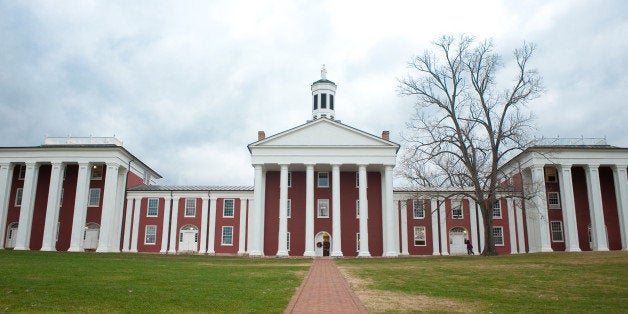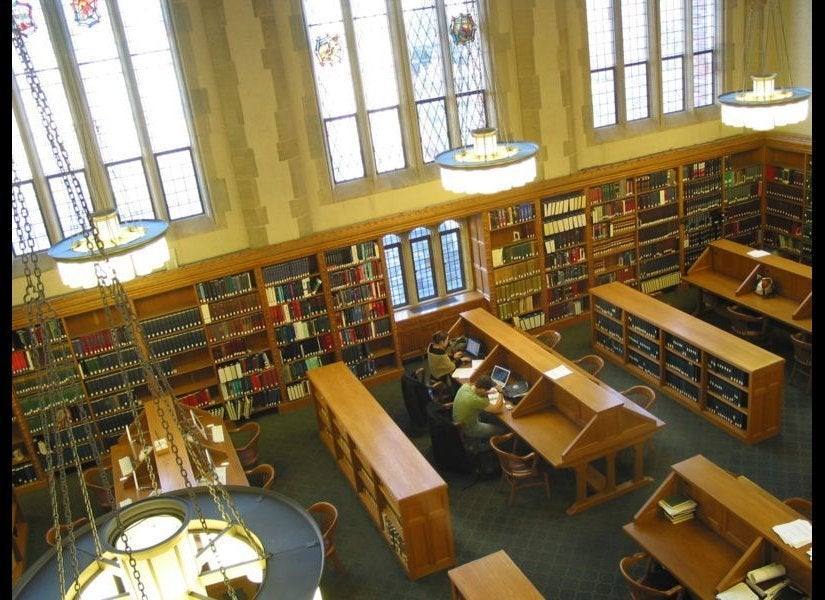
This article comes to us courtesy of U.S. News & World Report, where it was originally published.
When Robert Grey attended law school at Washington and Lee University, connecting with his classmates was not easy.
“I was the fourth person of color to graduate from the school in 1976," says Grey, who is African-American and now the president of the Leadership Council on Legal Diversity. "It was tough."
The school's faculty also wasn't diverse, he says.
His experience at the Virginia school was likely similar to other minorities in law school in the 1970s. During the 1975-1976 school year, for example, 7.8 percent of students were minorities at schools approved by the American Bar Association.
While that percentage has more than tripled, some minorities have yet to be strongly represented in 15 of the top law schools, according to a December report from the Journal of Blacks in Higher Education. The report focuses on minority enrollment at law schools, including at Harvard University, the Columbia University and Northwestern University.
"At none of these top law schools do Black enrollments reach 9 percent," the report states.
Law experts say that some schools take extra measures to serve minority students and make them feel welcome. Prospective law students who are of black, Hispanic or of another minority background can speak with a few key people to make sure the schools they are considering will be a good fit.
Most schools publish the demographics of their students, and this information can be a starting point for learning about a campus's diversity. But it may not give prospective students enough information.
"Numbers alone don't tell the whole story," says Andrea Lyon, dean of the law school at Valparaiso University, which is almost 40 percent minority. "The people who are going to give you the real information are the people who are here."
Most importantly, the people she suggests applicants speak with are minority students.
They, more so than faculty or admissions officers, can candidly discuss what the environment is like for students from diverse backgrounds, says Lyon and other experts.
"Call someone who is a member of BLSA," says Lyon, using the acronym for the Black Law Students Association, which has chapters at many law schools. Speaking with minorities who are in the student government association or other groups is also helpful, she says.
These groups and their leaders are typically easy to find online, says Lyon.
Dynette Cordova, national chair of the National Latina/o Student Association, believes that first checking to see if a school has such groups can be revealing. The third-year student at the University of New Mexico School of Law also believes it's worth taking a careful look at the people on campus who have long since graduated: "Faculty," she says.
Schools often publish articles on their faculty members. Cordova encourages prospective students to see how many of these articles cover minority faculty to better understand how minority leaders are valued on campus.
Applicants should also bring up faculty when speaking with current students, Cordova says, and ask "How accessible is faculty?"
They should inquire about how comfortable students feel asking questions about diversity during conversations with their peers and others. "How open is the school to having these kinds of discussions?" she says.
A school's course offerings may also show how much it supports minority students on campus, says Heidi Nesbitt, the director of the pre-law summer institute at the American Indian Law Center in New Mexico.
Some schools have Indian law classes, for example, or serve Native Americans through a law school clinic, she says.
Once students finish their classes and graduate, it's important to find out what happens to them, says Grey from the Leadership Council on Legal Diversity.
He advises prospective students to speak with people at the schools they're eyeing about how successful the school is in helping minority graduates become employed.
Students want to know that the success rate of minority lawyers getting a job is the same as majority lawyers, he says. "If there’s a disconnect there you want to know about it.”
He believes schools these days are much more focused on minorities than they were when he was in school, and Valparaiso may be a reflection of that.
The school has made a conscious effort over the years to increase diversity, Lyon says. Of the students who are underrepresented minorities, about half are black, she says.
"This is the world in which we live," Lyon says. "And we need to reflect and engage with the world in which we live.”
Searching for a law school? Get our complete rankings of Best Law Schools.
